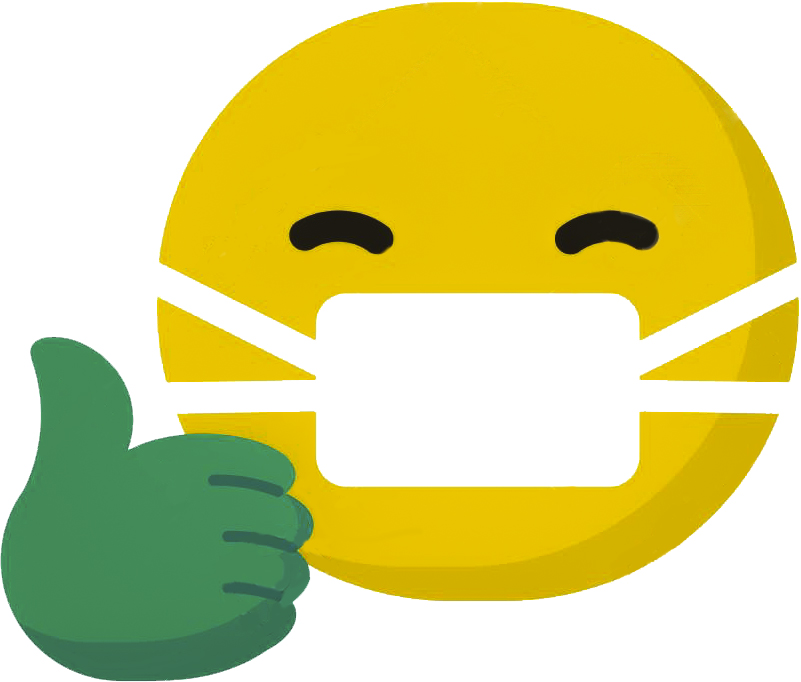How to Deliver “Service with a Smile” in the age of COVID-19

One of the biggest changes Covid-19 has triggered in the business world is also one of the easiest to overlook.
In a few short months, the pandemic has completely reshaped how businesses interact with their customers. Face-to-face meetings are out; video conferences are in. Handshakes are out; contactless interactions are in. Crowded, bustling stores are out; capacity limits and one-way aisles are in.
But one of the most significant, albeit subtle changes is Covid-19’s near-complete eradication of a widely-used and highly effective technique for fostering customer engagement; the smile.
The human smile exerts enormous influence on the perceptions of those with whom we interact- “service with a smile” isn’t just a catchphrase – it’s a proven approach for elevating customer satisfaction. When greeted or served with a smile, customers view the employees they’re interacting with as friendlier and more trustworthy. Tips go up. Re-purchase intentions rise and it all stems from a simple, primitive facial expression.
However, in a pandemic-stricken world where most companies now require their employees to wear face masks, service with a smile is, sadly, a thing of the past. Businesses shouldn’t underestimate the impact that this will have on their customer experience. Face coverings deprive both the customer and the employee of important visual cues that have long been cornerstones of social interaction.
For customers, it’s more difficult to sense if employees are welcoming, approachable, friendly, or cheerful. For employees, it’s more difficult to sense if customers are satisfied, delighted, frustrated or annoyed and the impacts don’t stop there. All of these challenges in parsing interpersonal signals also apply to colleagues within the workplace, and the internal customer interactions in which they take part.
Here are four tips for overcoming the customer experience challenges that ensue from a face-masked society:
-
Heighten awareness among employees - Wearing a face mask will soon become second nature for employees, and many may even forget that their facial expressions are shrouded from the customers and co-workers with whom they interact. Continually remind staff of this, so they’re more aware of the need to supplement facial expressions with other communication signals.
-
Use gestures as proxy signals - With smiles now hidden from public view, be sure to provide guidance to staff in what other signals they should be using to engage customers. For example, that could be a friendly wave to a customer as they enter the store or office. It could be a thumbs up sign to demonstrate agreement and understanding. Or a hand on the chest to show appreciation and thanks. Just as a smile does, these gestures complement the spoken word, providing visual context to whatever is being communicated.
-
Make the most of eye contact - Smiles may be hidden behind a face mask, but your eyes aren’t. Encourage your staff to focus on eye contact with customers and colleagues. First and foremost, it’s a signal of respect, indicating that the person you’re speaking with has your undivided attention. (That alone can help boost customer satisfaction). Also remind employees that they can “smile with their eyes,” using a slight squint to evoke the sign of a grin.
-
Solicit verbal indicators in place of facial ones - Without the benefit of full facial expressions to sense a customer’s emotional state, employees should go out of their way to elicit verbal indicators. Whereas in the past, staff could have used visual cues to know if a customer was satisfied or not, in the current environment they should err on the side of asking: Have I addressed all of your needs? Do you have any other concerns? Do you understand the information I’ve shared with you? The exact query will vary depending on the situation, but the point is to rely on verbal checkpoints to gauge the customer’s affect, instead of trying to infer it from visual cues.
Face coverings complicate the delivery of in-person customer experiences, given our reliance on facial cues when interacting with others. Our dependence on those skills can be difficult to break, as they are rooted deep in our evolutionary history. However, it’s important for businesses to find alternatives to those non-verbal communication signals, particularly since they can shape customer impressions so powerfully.
It’s just one of the many behaviours that businesses must adjust in the age of Covid-19. However, by tending to this task, you can help ensure that your customers have a smile on their face – even though you may never see it.